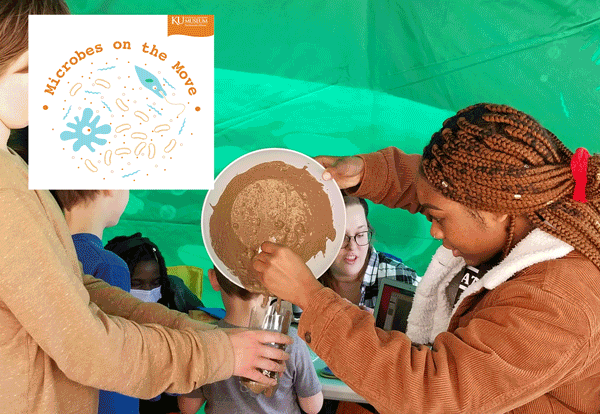
When a large green tent showed up on April 2 on the lawn of the public library, residents of Independence, Kansas, found more than books to check out.
A slew of specimens—from bones to biofilms, twigs to taxidermy—sat on display inside the tent that sunny Saturday as part of the Microbes on the Move traveling program from the University of Kansas Natural History Museum.
“This was our first big outside event that we’ve done since we’ve been able to pick up programming again,” said Independence Youth Librarian Jacob Williams.
The interactive event drew many visitors, giving Kansans of all ages a chance to learn about how microbes—tiny life that take a microscope to see—live among us and connect with other lifeforms.
“Seeing all the creatures and bones was really cool,” said Williams. “[It] was awesome that they were able to transport that for us, so that kids here who aren’t able to go to a proper museum were able to experience something like that, and of course the science experiments were a huge draw.”
While many attendees had heard about the event at local schools and in the newspaper, Williams said that a lot of people driving nearby stopped to see it because they saw the tent.
“They were like, oh, I want to see this! So, they just pulled over, got out of their cars, and had to come check it out.”
Teresa MacDonald, associate director of informal science education at the University of Kansas Biodiversity Institute and Natural History Museum, helped create the program in 2018 with funding from Kansas NSF EPSCoR, an initiative aimed at enhancing research and education across the state.
MacDonald and other museum staff and students plan to take the display and activities on the road again this summer to rural areas in Central and Western Kansas, where communities have limited access to science learning opportunities.
